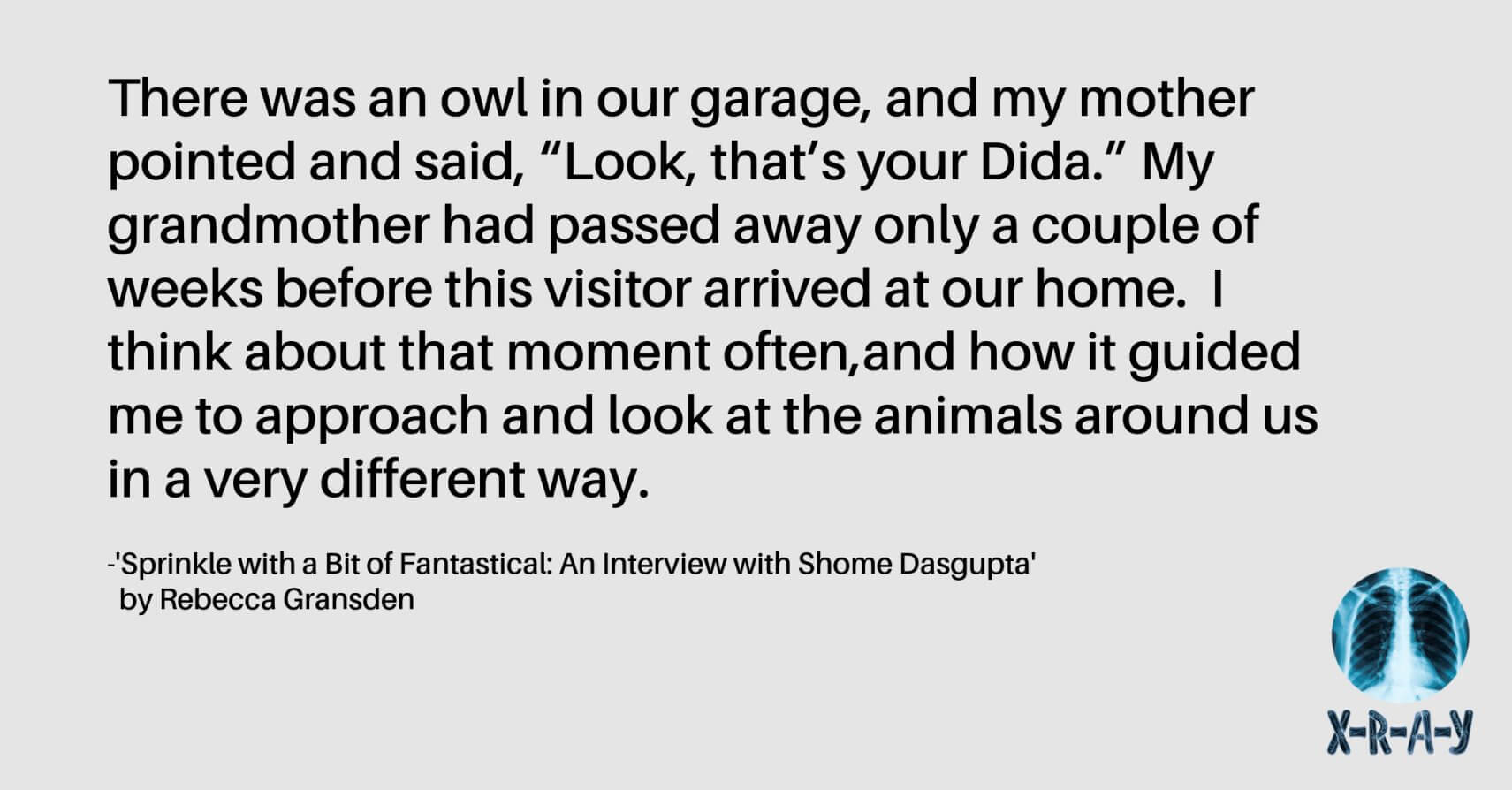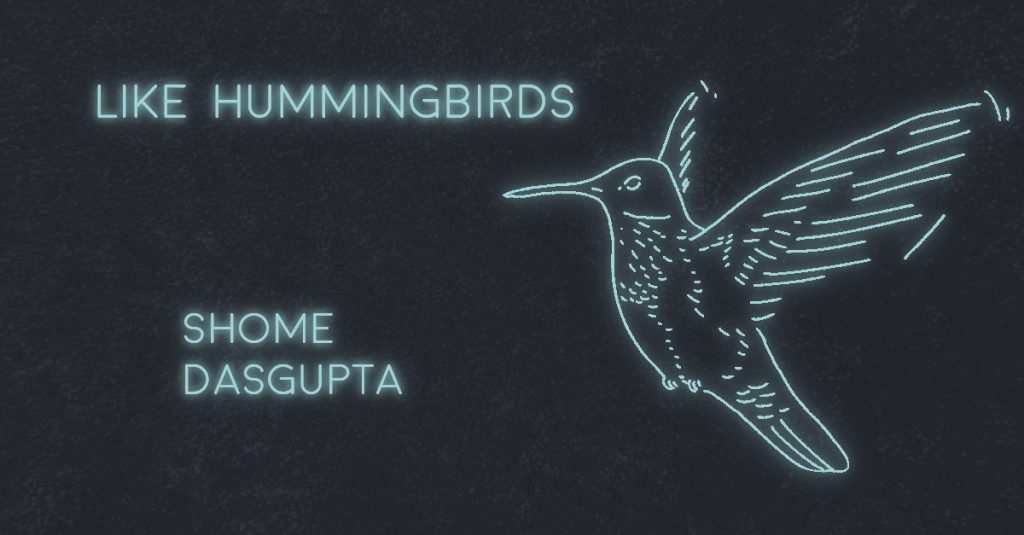
Shome Dasgupta
Shome Dasgupta is the author of The Seagull And The Urn (HarperCollins India), and most recently, the novels The Muu-Antiques (Malarkey Books) and Tentacles Numbing (Thirty West), a prose collection, Histories Of Memories (Belle Point Press), a short story collection, Atchafalaya Darling, and a poetry collection, Iron Oxide (Assure Press). His writing has appeared in McSweeney’s Internet Tendency, The Emerson Review, New Orleans Review, Jabberwock Review, American Book Review, Arkansas Review, Magma Poetry, and elsewhere. He lives in Lafayette, LA and can be found at www.shomedome.com and @laughingyeti.


LIKE HUMMINGBIRDS by Shome Dasgupta
Like when we sat on the sun and watched the world simmer in our heads, brother—remember that time? And how you were so furious and the words from your mouth smoldered, drifting towards every star, making sure there was no void. The pain. The pain you felt became ashes in my own body, and I’m so sorry, brother. I was helpless. And as much as I felt your pain, there was nothing I could do to take it away from you. Your skull vibrated as the smoke left through every pore of your body, and I just wanted to hold you, even if it meant I’d burn, but you wouldn’t let. You knew. You recognized, despite all that was happening, that you loved me and didn’t want to hurt me. Remember in that brief gleam of light, before you or I left, how the sun diminished and we floated in space no longer knowing if the world existed or cared if it did or not, and we hovered around like the hummingbirds in our backyard, trying not to bump into stars. We had so much fun and for that endless second you found peace as you took my hand and guided me around, much like you did in life. You loved those hummingbirds.
Brother, I fucked up so much, I’m so sorry.
And like before it all happened, when you were there we would be on our hands and knees, crawling in the ditch, pretending to be raccoons because there were no more raccoons left to feed. They went away just like you or me. But when we were playing, I cut my leg and cried so loud. You picked me up to take me home but I flailed so much we tumbled over, and the world was before us as we were on our backs. My pain went away as we tried to count all the birds in the sky.
And brother, I don’t know—I don’t know if I had the chance to do it all over again if I would change any of it. Including all the times I fucked up and all the times you had to pull on my arm while I was sinking. I don’t know if I would change it all up because look at who we became—I honestly think our parents would be so proud of us. How we made it through even though we weren’t meant to—I know who we are now, but if I could go back and change all the ways I needed to change, I don’t know who we would become.
You’d be so proud of me now, brother. I’m sorry. I’m glad you no longer feel any pain. I feel it every now and then but then it all goes away when it’s just us, floating around in space, drifting this way and that, toward every star, and every now and then a hummingbird appears, glowing and holy, fluttering its wings to let us know that we’re here. How you loved those hummingbirds, brother, I will never forget, even with closed eyes, I will never forget.
And this might be the last time we can speak—I don’t know if you can hear me—I’m not sure how all of this goes, but I love you, brother. Thanks for always being there.
